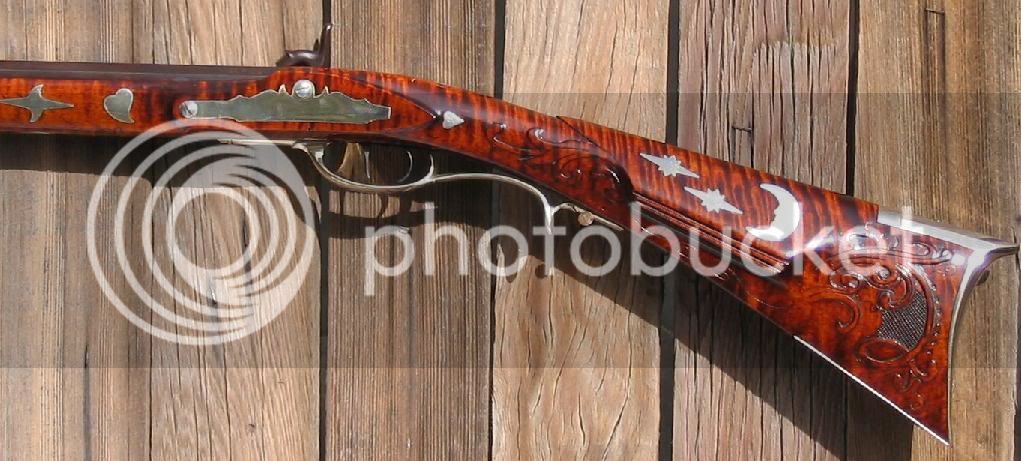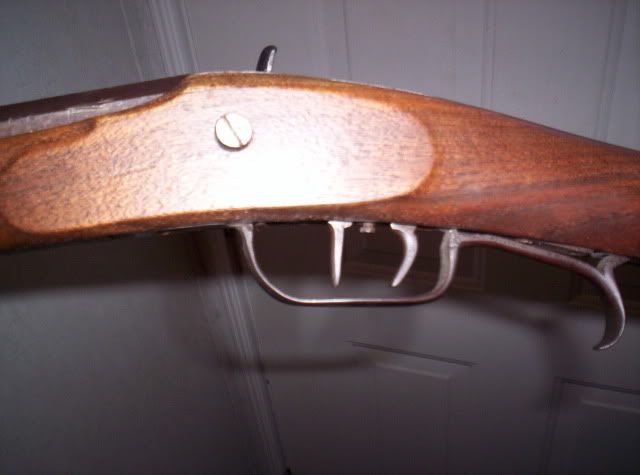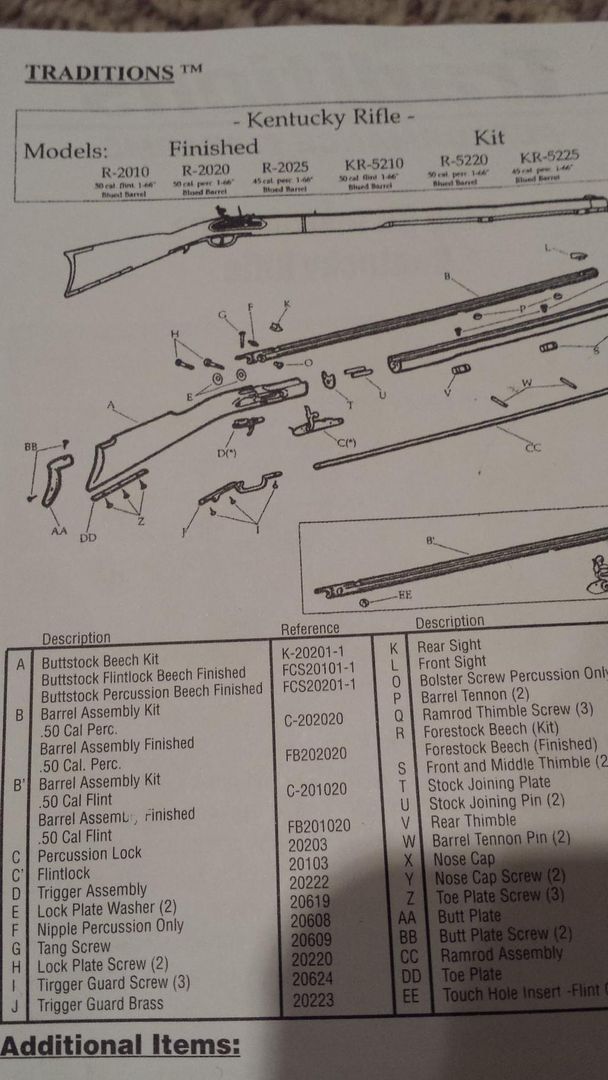The wood is always left oversize to allow the builder to shape it for a good fit with the metal parts.
I'm not sure which chamber your wood chip broke off in but I'm sure it is not worth worrying about.
If the chip is in an area that will be seen, you can always glue it back in place with a good wood glue like Elmers.
A word about shaping the wood to match the metal:
One of the biggest errors a builder makes is to just file or sand the wood within 1/2 to 1 inch of the metal part.
This always leaves a steep taper from the rest of the stock shape and quite frankly, looks like hell.
When shaping the wood, run the smaller surface at least 2 inches away from the metal part before blending it into the existing wood.
Better yet, reduce the size of the entire area to mate with the metal part.
A fine gunstock will always be one big continuous blend of shape and size between its various features. In other words, it should not be possible to tell where one area of the surface is reshaped to match another area of the stock.
I know this is difficult to imagine but if you look at other finely made rifles you will notice it.
I'm not sure which chamber your wood chip broke off in but I'm sure it is not worth worrying about.
If the chip is in an area that will be seen, you can always glue it back in place with a good wood glue like Elmers.
A word about shaping the wood to match the metal:
One of the biggest errors a builder makes is to just file or sand the wood within 1/2 to 1 inch of the metal part.
This always leaves a steep taper from the rest of the stock shape and quite frankly, looks like hell.
When shaping the wood, run the smaller surface at least 2 inches away from the metal part before blending it into the existing wood.
Better yet, reduce the size of the entire area to mate with the metal part.
A fine gunstock will always be one big continuous blend of shape and size between its various features. In other words, it should not be possible to tell where one area of the surface is reshaped to match another area of the stock.
I know this is difficult to imagine but if you look at other finely made rifles you will notice it.










